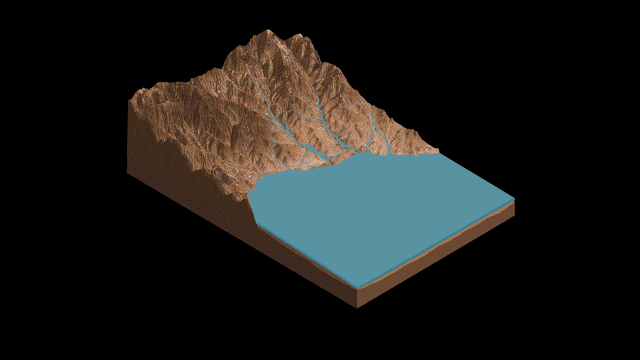Signs of life? NASA’s Curiosity rover discovers ancient oasis on Mars 3.5 billion years in the making (PHOTOS)

The surface of Mars is a frigid unwelcoming desert, but once upon a billions years ago there was an oasis, says a new study based on discoveries made by NASA’s Curiosity rover. But one mystery remains: was there life?
Using data gathered by the aptly named rover, scientists have determined a 100-mile-wide crater on the planet’s surface, dubbed “Gale,” was once dotted with small, salty lakes and ponds some 3.5 billion years ago. The finding provides a window deep into the Red Planet’s history, to a time when it may have been capable of sustaining life.
“Understanding when and how the planet's climate started evolving is a piece of [a] puzzle: When and how long was Mars capable of supporting microbial life at the surface?” asked William Rapin, lead author of a study on some of Curiosity’s discoveries published in the Nature Geoscience journal on Monday.
The remnant of a massive asteroid or meteoroid impact, Gale Crater preserves a “unique record of a changing Mars,” Rapin said, making it the ideal place to search for evidence of the planet’s prehistoric climate.
One section of the crater known as “Old Soaker” contains perhaps the clearest signs of an ancient oasis, leaving behind what appears to be a lake bed of dried, cracked mud. Scientists believe the region underwent a cycle of wet and dry periods, before ultimately desiccating to its current state.

To better imagine how Mars’s oasis may have appeared in its prime, one might look closer to home. Rapin suggested the saline lakes on South America’s high planes, which are also known by their distinct reddish appearance, might offer a general idea.

Curiosity landed on the surface of Mars in 2012, where it has collected samples and studied the planet’s climate and geology for over 2,600 consecutive days, far surpassing its initial two-year mission. The car-sized rover is now in the process of scaling Mount Sharp, the huge landmass smack in the center of the Gale Crater.
Think your friends would be interested? Share this story!















